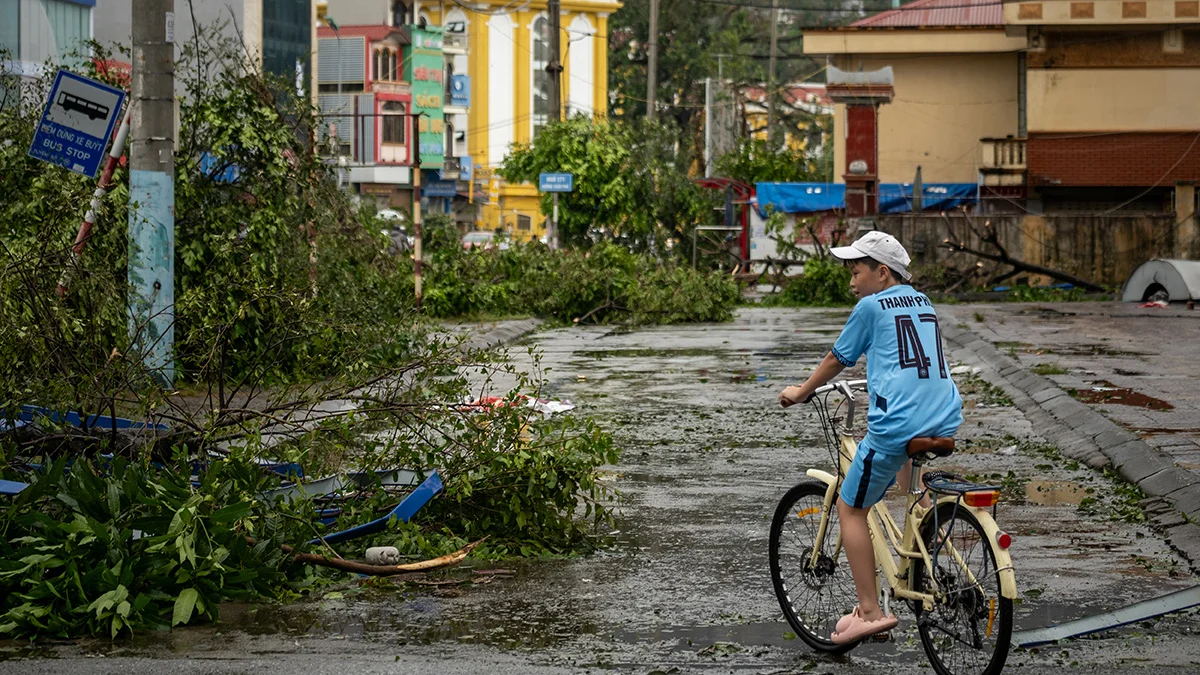Super Typhoon Yagi – the strongest storm in the region in decades – made landfall in northern Vietnam and caused catastrophic damage. With strong winds exceeding 120 km/h and heavy rainfall, the typhoon caused massive flooding, landslides and destruction on an enormous scale. Millions of children and their families are at risk.
On 7 September 2024, super typhoon Yagi hit northern Vietnam, its strength and intensity leaving a trail of catastrophic consequences. Millions of families are severely affected in coastal as well as mountainous and hard-to-reach areas. Strong winds exceeding 120 km/h and heavy rainfall caused massive flooding and landslides. The Vietnamese government reports 59 dead or missing, among them six children, and more than 250 injured.
“In any emergency, children are among those who suffer the most,” said Myo Zin-Nyunt, UNICEF Deputy Regional Director for East Asia and Pacific. “With their strong winds and heavy rains, typhoons can displace children and their families, shut down schools, disrupt their access to healthcare and safe drinking water, and increase the risk of waterborne diseases.”
The impact of the typhoon is immense: nearly 10,000 houses, approximately 550 health facilities and around 200,000 hectares of agricultural land have been damaged. In addition, at least 25 small ships sank, hundreds of thousands of roofs were blown away and 122,000 trees collapsed. All schools in the worst-affected areas have been closed.
The national disaster response agency, the Viet Nam Dyke and Disaster Management Authority (VDDMA) has activated the Disaster Risk Reduction (DRR) Partnership, which includes government bodies, UN agencies, INGOs and DRR and humanitarian partners.
The Government of Viet Nam has invited the support of all DRR and humanitarian partners, including UNICEF, to support the national response to this large-scale disaster.
Under its emergency response mandate and committed to alleviating the suffering of affected children and populations, UNICEF’s response, in coordination with the authorities, UN agencies and sector members, is focused on the rapid assessment, mobilisation of partners and resources, sector coordination responsibilities and emergency interventions in WASH, nutrition, health, education, child and social protection, including humanitarian cash transfers.
A UNICEF supply plan has been activated to mobilise pre-positioned essential supplies, such as water purification tablets, hygiene items, learning materials and tents, at national level and in warehouses across the region, as well as through the UNICEF Supply Division, if needed.
UNICEF urges frontline workers, parents, families, caregivers and local authorities in typhoon-affected areas to prioritize the safety and wellbeing of children, and urges families to stay informed through reliable sources and avoid areas at risk of flooding, landslides, and high winds during Typhoon Yagi.
